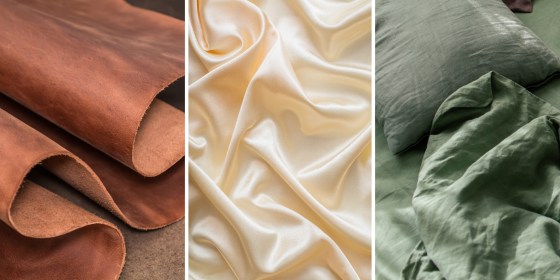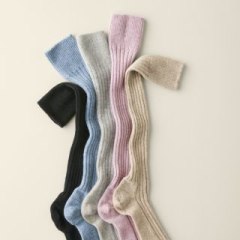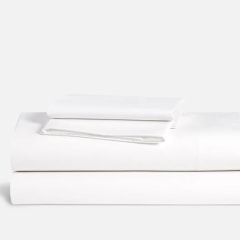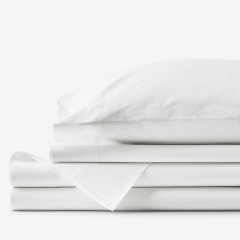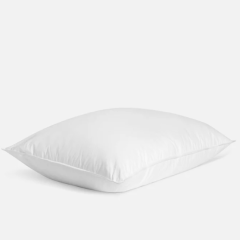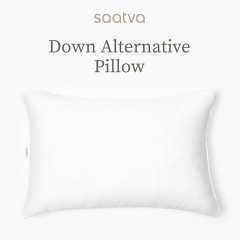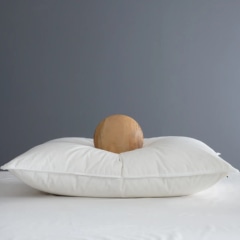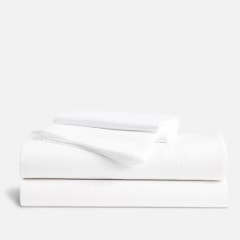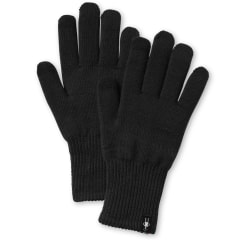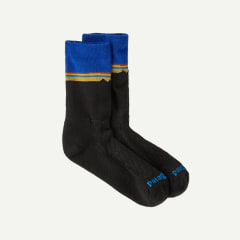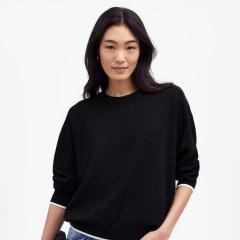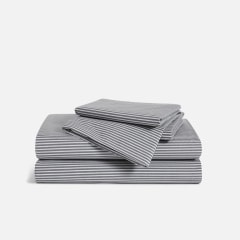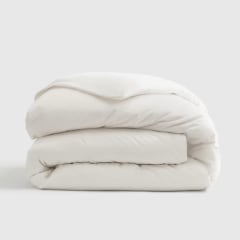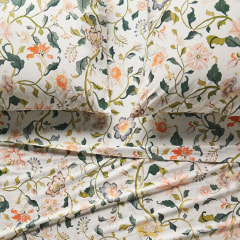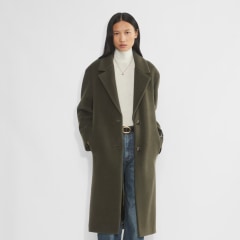You’ve probably looked at the tags on your clothes or bedding and tried to make sense of what it all means. These tags have a long list of terms and pictures that may look familiar but also confusing at the same time. I spoke with textile experts and bedding manufacturers to learn more about common fabric terms and how to properly care for them. That way you can increase the longevity of your items and prevent them from shrinking or fading.
SKIP AHEAD Cashmere | Corduroy | Cotton | Denim | Down | Down alternative | Fleece | Lace | Leather | Linen | Merino wool | Microfiber | Neoprene | Nylon | Oeko-Tex Certified | Percale | Polyester | Rayon | Ripstop | Sateen | Satin | Silk | Spandex | Suede | Velvet | Viscose | Wool | Why trust NBC Select?
Want more from NBC Select? Sign up for our newsletter, The Selection, and shop smarter.
What’s the difference between a weave, fabric, material and fiber?
- Fiber: Think of this as the base of a fabric. It’s like what flour and eggs are to a cake (ie: foundational ingredients). Manufacturers weave or spin fibers together to create a piece of fabric, sheet or article of clothing.
- Weave: A weave is how threads of a fiber (cotton or wool, for example) are sewn together in a particular pattern to create things like clothing and bedding. After manufacturers weave a fiber, they treat it to finalize a fabric. For example, sateen and percale are types of weaves that are made with a variety of fibers.
- Fabric: A fabric is the finished product that comes from a woven, treated fiber. Examples include: linen, polyester and cotton.
- Material: This is a bit of a catch-all term that’s sometimes used interchangeably with the terms above. A fabric is a kind of material, but the word material can really refer to a range of tangible fibers.
Key fabric terms to know
Cashmere
Cashmere is a type of wool that comes from goats, particularly kashmiri goats, which are native to the Himalayan region of south and east Asia. It has an ultra-soft texture and insulating properties, making it especially warm but also costly, especially compared to wool from sheep.
Care instructions: Since cashmere is a relatively sensitive fabric (it’s prone to warping and fading), it’s best to hand wash garments made from it in cold water with mild detergent. Gently wring out excess moisture and lay out flat to dry. Hanging cashmere will lead to misshaping. Alternatively, you can dry clean it.
Corduroy
Corduroy is a type of weave that has a textured pattern with raised lines known as ridges or “wales,” which give corduroy its signature look. Since it’s a weave, you can technically find corduroy made from a variety of fibers, though cotton and cotton blends are the most common, according to the Vintage Fashion Guild, an organization that specializes in textile preservation.
Care instructions: Wash corduroy garments, such as pants and jackets, in a gentle cycle with cold water and mild detergent. Tumble dry on low or lay flat to dry.
Cotton
Arguably the most well-known, versatile and widely used fabric, cotton comes from cotton plants. The fabric has a lot of popular varieties, including short-staple, long-staple and extra long-staple, like Egyptian, Turkish and pima. Long-staple cotton refers to the length of the fibers in the cotton boll (the fuzzy ball-like fruit of the plant), which make for softer, more durable cotton fabrics, which is why they often cost more than short-staple cotton garments, according to my previous reporting. Cotton, depending on how manufacturers use it, has varying levels of softness and warmth.
Care instructions: Washing instructions depend on the garment, but a good default for cotton apparel or bedding is to wash in a gentle cycle with cold water and mild detergent and then air dry or tumble dry on low heat, to prevent shrinkage, which is very common, especially with 100% cotton materials.
Denim
Denim is a fabric traditionally made with 100% cotton using a unique weaving technique. “This fabric icon is created by pairing a ‘twill’ (consistent diagonal lines) weave with indigo dye,” says Leo Wang, co-founder of bedding brand Buffy. “Named after its birthplace of Nimes, France, denim is known for its durability and historically being the workwear of choice.”
Care instructions: “In between washes, air out your denim, use fabric spray, and steam regularly to remove unwanted odors,” says Frej Lewenhaupt, the CEO and co-founder of Steamery, a textile care brand. “When washing, turn your denim garment inside out and use a gentle spin cycle in cold temperatures. Hang or flat-dry and avoid the tumble dryer.” You can also put your jeans in the freezer; this will kill bacteria and reduce odor, according to experts in our guide on denim care.
Down
As it relates to bedding, the term “down” refers to the soft and breathable feathers from ducks, geese and sometimes chickens, according to Preeti Arya, assistant professor at the Fashion Institute of Technology. Down feathers are processed and used as stuffing for bedding and apparel because they insulate heat well.
Care instructions: It’s best to wash down and down-filled material sparingly, since overdoing it can cause it to lose its fluffiness, says Lewenhaupt. Wash on a gentle cycle with a delicate laundry detergent and avoid fabric softener to prevent the filling from changing texture or becoming less fluffy.
Down Alternative
Down alternative is exactly what it sounds like: a cheaper and synthetic material meant to mimic down feather filling.
Care instructions: Use a gentle cycle with cold water and mild detergent. Tumble dry on low. Avoid using fabric softener, just like with traditional down.
Fleece
Fleece is a synthetic material made from polyester, which is a variety of plastic. It’s typically manufactured to mimic the look and feel of wool, but is less expensive to produce.
Care instructions: Use a gentle cycle on your washing machine with mild detergent and cold water, and skip the fabric softener to maintain the fluffiness of a fleece jacket or sweater and to prevent garments like leggings from getting a waxy residue. Tumble dry on low. For accessories like hats, hand wash them in cold water and lay flat to dry.
Lace
“Lace is made from a pattern of weaved thread,” says Lewenhaupt. “It can be made by hand or, more commonly, by machine to create its intricate appearance.” Lace comes from a range of natural and synthetic fibers and is lightweight with a small and open holed pattern.
Care instructions: Lace is very prone to getting damaged so it’s preferable to wash by hand, though you can also wash in a machine with the right settings, according to Lewenhaupt. “For delicate lace, it’s recommended to wash by hand so it is less likely to be ripped,” he says. “Before washing in a machine, put your lace garments in a washing bag to avoid damage and use a delicate laundry detergent on a cold temperature setting.”
Leather
Leather comes from animal hides, commonly cattle. To make it, manufacturers cure or tan it before fabricating it, according to the United States Bureau of Labor Statistics. Over time, leather will soften, though you should keep it away from excessive moisture, heat and direct sunlight since it can lead to fading, cracking or even mold growth, according to experts in our guide on leather care.
Care instructions: You should keep leather apparel out of sunlight and any humid or moist areas because it can cause fading and discoloration. You can also use a leather cleaner to restore and maintain your leather’s moisture, therefore preventing cracking and damage. The cleaner should also hydrate it without adding excess water to your garment, which can lead to mold. You can use a leather cleaner on boots, pants, jackets and other upholstery every month and a half for hydration. In between those months, you should wipe it with a dry cloth every two to three weeks to keep it free of dirt and debris.
Linen
Linen is a natural material made from the flax plant, which also produces edible flaxseeds. It’s extremely lightweight, making it an ideal bedding choice for hot sleepers and warm temps. Plus, it’s very durable fabric and isn’t easily damaged by friction from years of sleeping or tossing and turning, according to Arya.
Care instructions: For bedding, clothing, towels and napkins made from linen, use a gentle cycle with cold or warm water and mild detergent to prevent them from fading. Tumble dry on low or lay flat to dry.
Merino wool
This wool comes from merino sheep, who have highly insulated, breathable and soft coats, which is why manufacturers commonly use it in bedding and winter apparel. “Wool is a natural protein fiber that is antibacterial and odor-resistant, meaning they don’t need to be washed as frequently,” says Lewenhaupt. Plus, since it wicks moisture, it keeps you warm without making you sweat, whether during winter or summer, according to Lewenhaupt. “Wool can hold a lot of moisture without feeling wet, which makes it a good material for winter apparel,” he says. It can also “transport moisture away from the skin and into the outer layer so that you don’t feel damp or cold.” Since wool repels sweat, you’ll commonly find summer hiking socks made from it, too.
Care instructions: For machine-washable garments, like T-shirts, use a gentle cycle with cold water and mild detergent. Tumble dry on low or lay flat to dry. For topcoats, peacoats and overcoats made from merino wool, you’ll have to dry clean them to avoid damage, according to laundry experts.
Microfiber
Microfiber is chemically the same as polyester (more on this below), but it’s made from finer fibers, according to Wang. It’s “problematic from a sustainability standpoint”, because polyester doesn’t decompose and since it’s ultra fine, water more easily absorbs it (via washing machines), says Wang. It’s relatively affordable from a manufacturing perspective, which is why it’s a common choice for clothing and bedding.
Care instructions: For particularly soiled, stained odorous towels and cloths, wash on a warm to high heat cycle. Otherwise, use a gentle cycle with cold water. Tumble dry on low.
Neoprene
Neoprene is a type of synthetic rubber that’s also called polychloroprene, according to Chemical Safety Facts, an organization maintained by the American Chemistry Council that provides information on consumer products and textiles. The material has a strong and flexible feel to it, making it ideal for safety-related padding garments, like knee pads and arm braces.
Care instructions: Refer to the manufacturer’s directions, otherwise, always use a gentle cycle with cold water and tumble dry on low to avoid the changing the texture and flexibility of the garment. To spot clean, you can also use an enzyme-based cleaning spray and a cloth or scrub brush.
Nylon
Nylon is a petroleum-based polymer (a type of plastic) that manufacturer’s spin to make into apparel and textiles, according to Arya. Fabrics made from nylon are typically very stretchy and flexible, which is why it’s common in activewear, swimwear and dance clothing, according to the Textile Exchange, an organization specializing in textile research.
Care instructions: You can put nylon clothing in the wash using a gentle cycle with cold water and mild detergent. For delicate items, such as headbands and other accessories, consider putting them in a delicates bag first or hand wash. Tumble dry on low or layout flat to dry if delicate.
Oeko-Tex Certified
Oeko-Tex is a certification organization that tests textiles — commonly cotton ones — for harmful ingredients. Companies and brands must send textile samples for testing to get approved and use the certification label, according to Arya. “It’s important to understand Oeko-Tex certification does not mean the certified textile has zero harmful chemicals, but rather specifically that it was tested for harmful chemicals and the volume of harmful chemicals is within a reasonable standard,” he says.
Care instructions: For Oeko-Tex-certified bedding and clothing, refer to the care instructions for that individual material, otherwise wash on a gentle cycle with cold water and mild detergent and tumble dry on low heat to prevent warping and fading.
Percale
Percale is a type of weave commonly found in bedding — you can technically make it with several fibers, like cotton or polyester. It’s known for being extremely airy, breathable and crisp in texture rather than soft, making it a match for hot sleepers.
Care instructions: Wash bedding on a gentle cycle with cold water and mild detergent and tumble dry on low to prevent warping and fading.
Polar fleece
Polar fleece is a thicker and therefore, more insulated, version of traditional fleece, according to Lewenhaupt. “It’s a synthetic material that is known for its soft, plush texture and for being very warm,” she says. “Since it’s a synthetic material, it doesn’t have as much breathability as natural fabrics.” Because it’s so warm, however, it’s common in winter apparel.
Care instructions: Similar to traditional fleece, wash on a gentle cycle with cold water and mild detergent, and skip the fabric softener, which can change the texture of the fleece and leave a waxy film.
Polyester
Polyester is a type of synthetic fiber made from petroleum (a non-renewable resource) that’s common in clothing, garments and accessories, and is similar in scale to cotton, according to The Council of Fashion Designers of America (CFDA), a not-for-profit trade organization. Polyester is relatively cheap to produce compared to natural fibers, which is why it’s a common alternative to cotton or down feathers.
Care instructions: Polyester is prone to shrinkage, like cotton, so always wash on a gentle cycle with cold water and tumble dry on low heat.
Rayon
Rayon is a type of regenerated cellulose textile (plant fibers) and is one of the oldest human-manufactured fabrics produced as a cheaper alternative to silk, according to Arya. Rayon fabrics are usually made from wood pulp, but are also made from coconut husks, bamboo grass (think bamboo sheets) and cotton, according to Arya. Viscose, modal and lyocell are all types of rayon and are popular in warm-weather clothing and bedding because of their breathability, according to Lewenhaupt.
Care instructions: Wash rayon bedding and clothing on a gentle cycle with cold water and mild detergent, and tumble dry on low to prevent warping, fading and shrinking (which it’s particularly susceptible to), according to Lewenhaupt.
Ripstop
“Ripstop is a durable fabric that can be made from nylon and typically used for outdoor gear like backpacks and tents due to its water resistance,” says Lewenhaupt. It’s woven in a way to make it resistant to elements and movement, which is why it is common in things you’d wear or use outside.
Care instructions: Wash apparel on a gentle cycle with cold water and mild detergent and tumble dry on low. Place delicate garments in a laundry bag before adding to the washer and dryer to prevent them from warping.
Sateen
Similar to percale, sateen (not to be confused with satin) refers to a type of weave pattern instead of a fabric or fiber. Fabrics made with a sateen weave are much softer than percale ones, though they can often be warmer, too, so they aren’t always the best choice for hot sleepers. Cotton is often used to make a sateen-woven fabric, though there are sateen weaves made from synthetic fibers, too.
Care instructions: Wash on a gentle cycle with cold water and mild detergent, and tumble dry on low to prevent warping and fading.
Satin
Satin is a type of weave made with synthetic fibers and made to resemble the look and feel of genuine silk.
Care instructions: Even though it’s different from silk, you should still treat it similarly. Wash on a gentle cycle with cold water and mild detergent in a delicates bag and tumble dry on the lowest setting or lay flat to air dry.
Silk
Silk is a luxe and extremely soft and smooth fabric made from the secretions silkworms use to make their cocoons. It’s expensive because it’s labor-intensive to produce. Manufacturers also commonly use silk for pajamas, robes and bedding, including pillowcases because it’s breathable and gentle on hair and skin.
Care instructions: For machine-washable silk, place your items in a garment bag on a gentle cycle with cold water and mild detergent and lay flat to air dry. For silk that isn’t labeled machine washable, Lewenhaupt recommends washing by hand, dry cleaning or even using a clothes steamer. “The hot steam efficiently refreshes the fabric while being much kinder than traditional washing methods,” he says. “Steaming not only helps silk maintain its softness and natural sheen but also extends the garment’s lifespan.” To spot clean stains on silk clothing or bedding, dampen a soft wash cloth with cold water mixed with a mild detergent. Pat the stain gently.
Spandex
Spandex is more generally known as elastane and sometimes called lycra. It’s a synthetic-fiber based fabric known for being very stretchy and flexible, according to Patagonia, which uses the fabric in many of its apparel items.
Care instructions: Treat spandex, like shapewear and silk, as a delicate item. Wash on a gentle cycle with cold water and mild detergent in its own mesh bag and tumble dry on low.
Suede
Suede is made from cattle hides, but differs from leather in how it’s treated, according to Arya. Like leather, it can be expensive and has a soft and smooth texture, though leather is much more taut. To produce suede, manufacturers clean and finish the inside of a hide whereas leather comes from a tougher outer side of the hide.
Care instructions: Don’t wash or dry in a machine, as suede is prone to damage and fading. Either use a suede protector spray or dry clean it.
Velvet
Velvet is a plush, lustrous material made with a pattern of loops called a pile. “The signature soft texture is a result of the weaving technique rather than the fabrics used,” says Lewenhaupt. “Traditional velvet is made from pure silk, and velvet made from other materials [such as cotton] can have a slightly different appearance and feel.”
Care instructions: There are a few routes you can take to clean a velvet garment, according to Lewenhaupt. “Steaming is a great way to keep velvet clean as it reduces odors and kills bacteria,” he says. “If your velvet garment gets stained, I recommend using a stain remover.” Spray the stain and wait five minutes before wiping it gently with a damp towel and/or add to the wash on a gentle cycle with cold water and a delicate detergent. You can also use a velvet brush to gently remove surface-level debris like dust and lint.
Viscose
Viscose is one of several types of rayon fabrics produced from regenerated cellulose, mainly from wood pulp. “These are lightweight fabrics often used for warm-weather clothing and bedding due to their breathability,” says Lewenhaupt.
Care instructions: Treat fabrics labeled as viscose similar to rayon. Wash on a gentle cycle with cold water and tumble dry on low.
Wool
Wool most commonly refers to the fabric made from a sheep’s coat, also called a fleece, though you can find wool fabrics made from goats (cashmere) and alpacas, too. It’s best known for its insulation, heat retention and coziness, which is why it’s a go-to for winter apparel and blankets. It has antibacterial and odor-resistant properties, meaning it doesn’t get dirty as quickly as non-wool clothing and you don’t need to wash it as often, according to Lewenhaupt. Wool is also temperature regulating and wicks moisture away from the body, preventing garments like sweaters and socks from feeling damp from sweat, according to Lewenhaupt.
Care instructions: It’s best to dry clean wool apparel and bedding to prevent shrinkage or warping, though you can also consider hand washing in cold water with mild detergent and lay the fabric out flat to dry.
Meet our experts
NBC Select, we work with experts who have specialized knowledge and authority based on relevant training and/or experience. We also take steps to ensure all expert advice and recommendations are made independently and without undisclosed financial conflicts of interest.
- Leo Wang is the co-founder of bedding brand Buffy.
- Preeti Arya is an assistant professor at the Fashion Institute of Technology.
- Frej Lewenhaupt the CEO and co-founder of Steamery, a clothing care brand.
Why trust NBC Select?
I’m a commerce editor at NBC Select, where I regularly cover bedding and laundry. I’ve written about the best bamboo sheets, sensitive skin-friendly detergent and how to wash different types of clothing and for this story I spoke to three fabric experts and consulted the guidance of various textile organizations, including Buffy, Steamery and the Fashion Institute of Technology.
Catch up on NBC Select’s in-depth coverage of tech and tools, wellness and more, and follow us on Facebook, Instagram, Twitter and TikTok to stay up to date.
